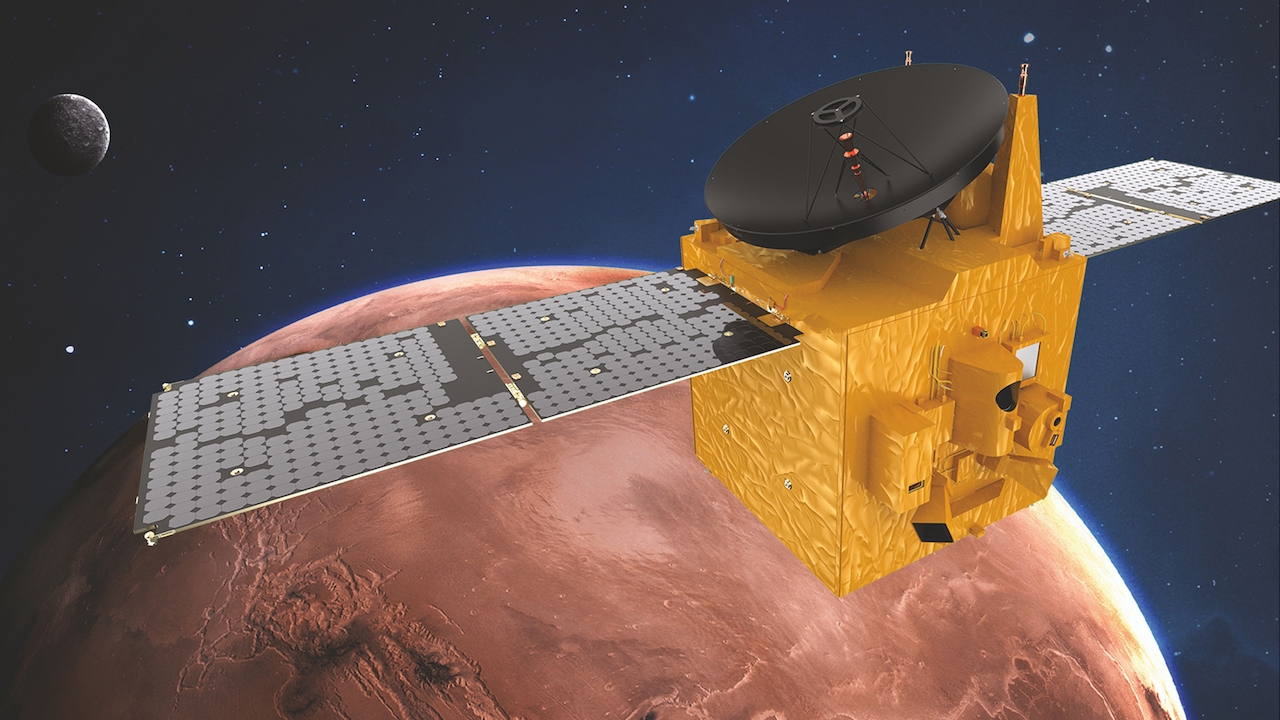A Mars a day...
The Emirates Mars Mission (EMM) has released a series of new observations drawn from the first measurements of Mars’ atmosphere across a full Martian year (two full Earth years).

The release celebrates the third year of science data gathering around Mars by the Hope probe and marks the accomplishment of the Mission’s stated science objectives.
The Hope probe, which was launched from Tanegashima Space Centre, Japan in July 2020, is the first mission to provide a complete picture of the Martian atmosphere and its layers. Its data are helping to answer key questions about the global Martian atmosphere and the loss of hydrogen and oxygen gases into space.
Hope has used its scientific instruments, which include visible, infrared and ultraviolet spectrometers, to map and understand the lower atmosphere of Mars and the weather systems that exist.
Scientists around the world have benefitted from the vast amount of data the mission has released so far, including images of the planet’s aurora and abundance of oxygen.
Salem Butti Al Qubaisi, director general of the UAE Space Agency, said: “The Emirates Mars Mission was conceived to provide a national challenge that would accelerate the development not only of the UAE’s engineering capabilities, but to disrupt our education, research and innovation ecosystems.
“There is no doubt at all that it has succeeded in that beyond our wildest expectations. At the outset, the UAE’s leadership made it clear that EMM should make a significant scientific contribution and we can now say that the mission not only fulfilled its original science objectives, but has significantly surpassed them.”
EMM was designed to achieve three objectives that complemented questions posed by the global grouping of Mars scientists and researchers, MEPAG – the Mars Exploration Program Analysis Group. Hope set out to monitor the global, diurnal, and seasonal changes that the Martian atmosphere undergoes due to year-to-year variations including those caused by solar forcing that result in atmospheric escape – particularly of hydrogen and oxygen and the temporal and spatial behaviour of Mars’ atmosphere.
Hoor Al Mazmi, EMM project manager at the Mohammed Bin Rashid Space Centre (MBRSC), added: “We can say with confidence that EMM has blown past its original stated science objectives. Not only have we achieved our goals, and taken Hope into an extended mission, but we have added unique new discoveries, from investigations of new types of aurora through to the most extensive new observations of Mars’ least known moon, Deimos.
“Hope’s unique elliptical orbit supports these unique observations, giving us a near-complete picture of the planet’s atmospheric dynamics every nine days. That has enabled us to create an incredible depiction of Mars’ changing atmosphere day and night, across the seasons and throughout a full Martian year.”
Mars’ aurorae are unlike the type we have on Earth, which are concentrated at the north and south magnetic poles. Known as a “discrete aurora” on the nighttime side of the Red Planet, the phenomenon is caused by solar energy interacting with crustal formations.
Mohsen Al Awadhi, director of space missions department at the UAE Space Agency, said: “With the probe performing optimally, we performed a manoeuvre to support a season of Deimos observations and I can say today that we still have the option, from an engineering point of view, of further extending the mission.”
But the UAE’s aspirations for Mars don’t stop there. It has also declared that it aims to establish the first inhabitable human settlement on the Red Planet by 2117. The goal is to inspire future generations and “instil a culture based on discovery and education”.
HH Sheikh Mohammed bin Rashid Al Maktoum issued directives to MBRSC to lead the Mars 2117 project and prepare a 100-year plan for its implementation.
Stay up to date
Subscribe to the free Times Aerospace newsletter and receive the latest content every week. We'll never share your email address.


